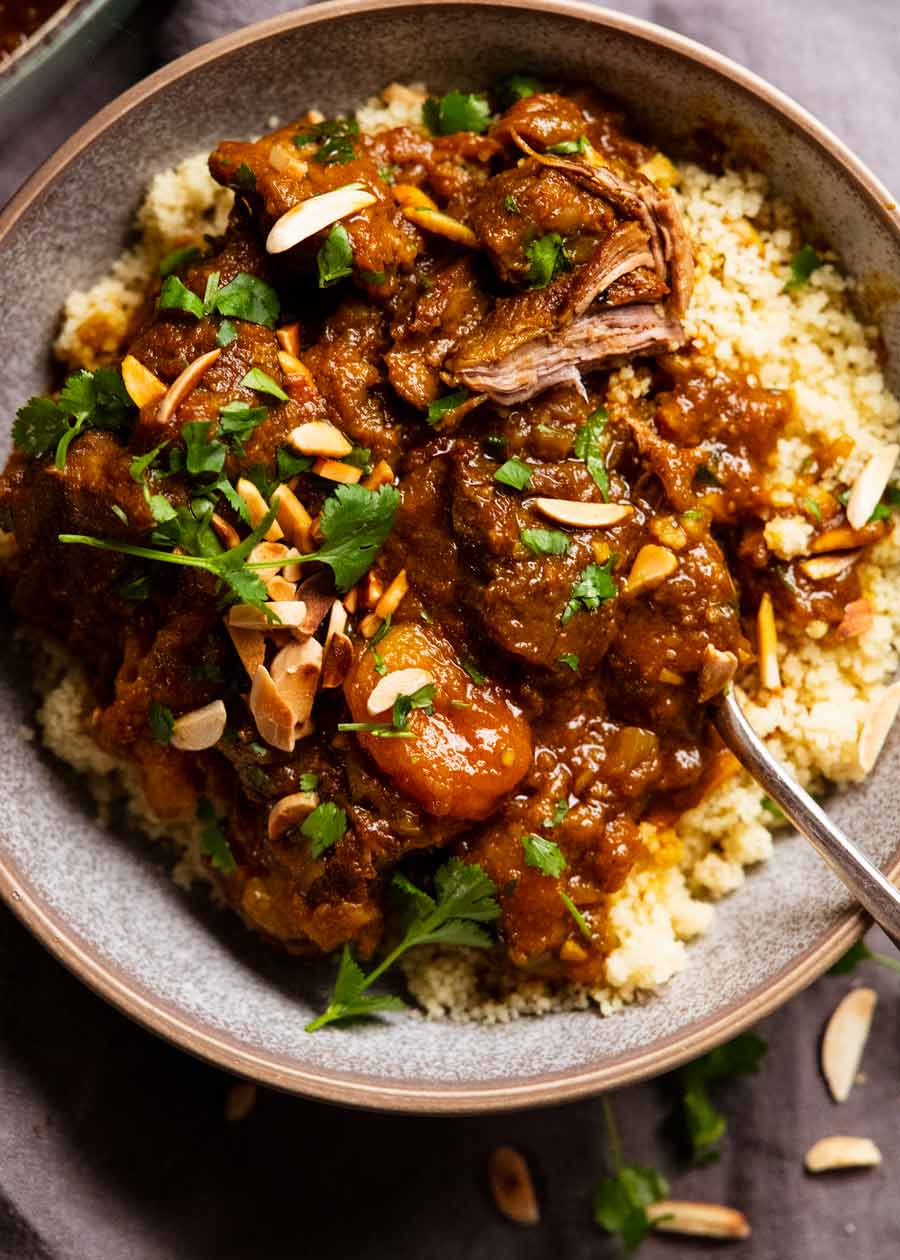
Moroccan Lamb Tagine: A Culinary Journey to the Heart of North Africa
In the vibrant tapestry of North African cuisine, the Moroccan lamb tagine reigns supreme. This aromatic and flavorful dish is a testament to the rich culinary heritage of Morocco, where the mingling of spices, herbs, and tender lamb creates a symphony of flavors that tantalizes the taste buds.
Origins and Cultural Significance
The tagine, a conical-shaped earthenware cooking vessel, is the namesake of this beloved dish. Its origins can be traced back to the Berber tribes of North Africa, who used it to cook slow-simmered stews over an open fire. Over time, the tagine became a staple in Moroccan households, where it is used to prepare a wide variety of dishes, including the iconic lamb tagine.
Ingredients and Preparation
The essence of a Moroccan lamb tagine lies in its carefully selected ingredients and meticulous preparation. The main protagonist is, of course, lamb, typically cut into large chunks and seasoned with a vibrant blend of spices. These spices include cumin, coriander, turmeric, paprika, and saffron, which impart a warm and earthy flavor to the meat.
In addition to the lamb, the tagine includes a medley of vegetables that add texture, color, and sweetness. Carrots, onions, and potatoes are common additions, along with dried apricots or raisins for a touch of fruity sweetness. The vegetables are sautéed in olive oil until caramelized, then added to the tagine along with the lamb.
The key to a flavorful tagine is the slow-simmering process. The lamb and vegetables are cooked over low heat for several hours, allowing the spices and flavors to meld and penetrate the meat. As the tagine simmers, it releases a heady aroma that permeates the kitchen, creating an irresistible invitation to dine.
Serving and Accompaniments
Traditionally, Moroccan lamb tagine is served directly from the tagine vessel, placed in the center of the table for communal dining. It is accompanied by couscous, a fluffy semolina dish that serves as a perfect accompaniment to the rich and flavorful tagine.
Other popular accompaniments include khobz, a Moroccan flatbread, and pickled vegetables such as olives, lemons, and carrots. These accompaniments provide a refreshing contrast to the hearty tagine and help balance the flavors.
Variations and Regional Influences
While the classic Moroccan lamb tagine is a beloved dish throughout the country, there are regional variations that reflect the diverse culinary traditions of Morocco. In the northern regions, the tagine may include green olives and preserved lemons, while in the southern regions, it is often flavored with harissa, a spicy chili paste.
Some variations also incorporate different types of meat, such as chicken, beef, or goat. The vegetables used may also vary depending on the season and availability of produce.
Health Benefits
Beyond its culinary delights, Moroccan lamb tagine offers a range of health benefits. Lamb is a good source of protein, iron, and zinc, while the vegetables provide essential vitamins and minerals. The spices used in the tagine, such as cumin and turmeric, have antioxidant and anti-inflammatory properties.
Cultural and Social Significance
In Moroccan culture, the lamb tagine holds a special place. It is often served at important occasions such as weddings, festivals, and family gatherings. The communal dining experience associated with the tagine fosters a sense of togetherness and strengthens family bonds.
Conclusion
Moroccan lamb tagine is a culinary masterpiece that embodies the rich flavors and traditions of North Africa. Its tender lamb, aromatic spices, and vibrant vegetables create a symphony of flavors that is both comforting and exotic. Whether enjoyed as a special occasion dish or as a comforting meal on a cold evening, the Moroccan lamb tagine is a culinary journey that will transport you to the heart of North African cuisine.
Recipe for Moroccan Lamb Tagine
Ingredients:
- 2 pounds boneless lamb shoulder, cut into 1-inch chunks
- 1 large onion, chopped
- 2 carrots, peeled and chopped
- 2 potatoes, peeled and chopped
- 1/2 cup dried apricots or raisins
- 1 tablespoon olive oil
- 1 teaspoon ground cumin
- 1 teaspoon ground coriander
- 1 teaspoon ground turmeric
- 1/2 teaspoon paprika
- 1/4 teaspoon saffron threads (optional)
- 1/4 cup chopped fresh cilantro
- Salt and pepper to taste
Instructions:
- In a large skillet, heat the olive oil over medium heat. Add the lamb and brown on all sides.
- Transfer the lamb to a tagine or Dutch oven. Add the onion, carrots, potatoes, apricots, cumin, coriander, turmeric, paprika, and saffron (if using). Season with salt and pepper to taste.
- Add enough water to cover the lamb and vegetables by about 1 inch. Bring to a boil, then reduce heat to low and simmer for 2-3 hours, or until the lamb is tender and the vegetables are cooked through.
- Stir in the cilantro and serve hot with couscous or bread.
Tips:
- For a richer flavor, marinate the lamb in the spices overnight before cooking.
- If you don’t have a tagine, you can use a Dutch oven or a large pot with a lid.
- Serve the tagine with a dollop of yogurt or harissa for an extra layer of flavor.
- Leftover tagine can be stored in the refrigerator for up to 3 days.















